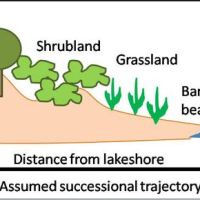Confinement or Conservation? The role zoos play in the conservation movement
Posted: May 3, 2017 Filed under: 2017, ERES525, Research Essay | Tags: captive breeding, conservation, World Association of Zoos and Aquariums, zoos Leave a commentThe popularity of zoological institutions has been steadily declining in recent years, as public perception and approval of keeping animals in captivity decreases (Whitworth, 2012). This has lead to an evolution in the role of zoos, with many zoos moving away from strictly entertainment based businesses towards a more conservation focused, globally connected industry (Barongi et al., 2015). All members of the World Association of Zoos and Aquariums (WAZA) are now required to set conservation-relevant goals (Barongi et al., 2015). As anthropogenic threats to biodiversity in natural ecosystems, such as habitat destruction, climate change, invasive species, and over-exploitation of natural resources, continue to expand (Miller et al., 2004), virtually all ecosystems are undergoing catastrophic declines in their natural species. This is emphasised in Living Planet Index’s latest report, indicating that vertebrates have declined by as much as 58% between 1970 and 2012 (WWF, 2016). It is clear that it will not be possible to halt this decline without pursuing a range of conservation approaches. In this, collection-based institutions can play a significant role in the ex-situ conservation of many species worldwide (Bowkett, 2009).
For species whose habitat is severely threatened, ex-situ populations (outside of their natural habitat) can be maintained in zoos, acting as “arks” or reservoir populations (Rabb, 1994). Global captive breeding programs of such populations for reintroduction into their natural habitat have played a key role in the recovery of at least 17 species whose threat level has been reduced in North America, including the black-footed ferret (Howard et al., 2016) and Californian condor (Conde et al., 2011). Furthermore, the global network provided by the WAZA for the transfer of genetic material between zoological institutions assists in maintaining the genetic diversity of otherwise fragmented populations (Bowkett, 2009), retaining maximum heterozygosity and adaptive potential, avoiding inbreeding, and maintaining reproductive health of these populations (Howard et al., 2016) (Ivy, 2016).
Zoos provide unique opportunities for conservation-relevant research, benefitting not only captive populations but also the conservation management of natural populations and ecosystems. Zoos provide easy access to individuals and populations long-term, allowing researchers to attach significant life-history context to data and samples that would be unavailable from wild populations, due to inaccessible environments, cryptic behaviour of some species, and the possible impacts studies pose to animals in the wild (Barongi et al., 2015). Furthermore, the skills and knowledge acquired in terms of small populations management are critical for the protection of threatened populations in their natural ecosystems (Barongi et al., 2015).
Possibly the most important role zoos play in their contribution to conservation is the potential they play for the education and engagement of the public. Human lifestyle choices are driving the current declines seen in populations worldwide, and a revolution of humans’ behaviour is necessary to halt this decline (Barongi et al., 2015). While many people place an innate value on nature, others need to be convinced of the importance of conserving biodiversity. Due to urbanisation, more than 50% of the world’s population live in cities, a statistic that is likely to increase in coming years (Miller et al., 2004). Zoos provide an opportunity to engage urban populations with living organism in a way they would be unable to experience in their day-to-day lives (Rabb, 1994). In fact, more than 700million people visit WAZA affiliated zoos and aquariums yearly, giving zoos a unique opportunity to influence this large audience in pro-environmental and conservation behaviours, to bring about the attitude-shift needed to halt the worldwide decline of species seen today (Barongi et al., 2015). As such, many zoos have incorporated conservation messages in signs, presentations and campaigns situated around their facilities in order to engage visitors, and encourage their support of conservation goals (Barongi et al., 2015).
A wide range of conservation actions are required to halt the ongoing extreme rate of biodiversity decline seen throughout the world today. Here zoological institutions play an important role, providing reservoir populations and allowing for captive breeding programs, while also engaging the public in conservation projects and pro-environmental behaviours. Furthermore, they provide access to individuals for research purposes that may be otherwise unattainable from wild populations.
References
Barongi, R., Fisken, F.A., Parker, M. & Gusset, M. (eds) (2015). Committing to Conservation: the World Zoo and Aquarium Conservation Strategy. Gland, Switzerland: WAZA.
Bowkett, A.E. (2009). Recent Captive-Breeding Proposals and the Return of the Ark Concept to Global Species Conservation. Conservation Biology, Vol 23., no. 3, pp. 773-776.
Conde, D.A., Colchero, F., Jones, O.R., & Scheuerlein, A. (2011). An emerging role of zoos to conserve biodiversity. Science, Vol. 331, no. 6023, pp. 1390-1391.
Howard, J.G., Lynch, C., Santymire, R.M., Marinari, P.E. & Wildt, D.E. (2016). Recovery of gene diversity using long-term cryopreserved spermatozoa and artificial insemination in the endangered black-footed ferret. Animal Conservation, Vol. 19, no. 2, pp. 102-111.
Ivy, J.A. (2016). Ameliorating the loss of genetic diversity in captive wildlife populations. Animal Conservation, Vol. 19, no. 2, pp. 112-113.
Miller, B., Conway, W., Reading, R.P., Wemmer, C., Wildt, D., Kleiman, D., Monfort, S., Rabinowitz, A., Armstrong, B. & Hutchins, M. (2004). Evaluating the Conservation Mission of Zoos, Aquariums, Botanical Gardens and Natural History Museums. Conservation Biology, Vol. 18, no. 1, pp. 86-93.
Whitworth, A.W. (2012). An Investigation into the Determining Factors of Zoo Visitor Attendance in UK Zoos. PLoS One, Vol. 7, no. 1, e29839.
Rabb, G.B. (1994). The Changing Roles of Zoological Parks in Conserving Biological Diversity. American Zoologist, Vol. 34, no. 1, pp. 159-164.
WWF. (2016). Living Planet Report 2016. Gland, Switzerland: WWF.



